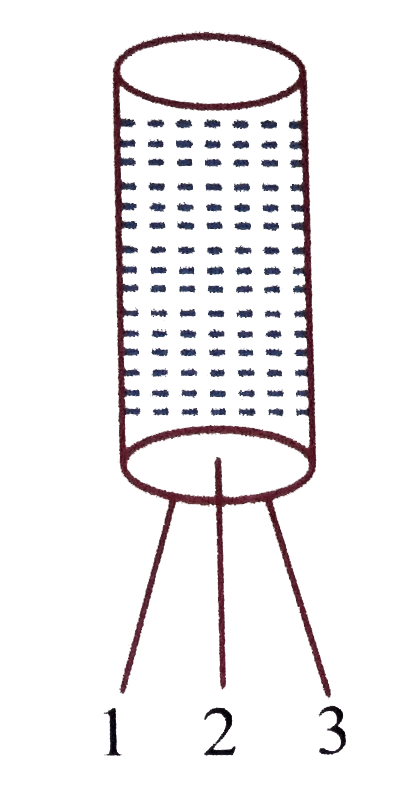When a fat person tries to touch hit toes, keepig the legs straight he generally falls. Explain with reference to figure.

Step by step video & image solution for When a fat person tries to touch hit toes, keepig the legs straight he generally falls. Explain with reference to figure. by Physics experts to help you in doubts & scoring excellent marks in Class 11 exams.
Updated on:21/07/2023Topper's Solved these Questions
- ROTATIONAL MECHANICSBOOK - HC VERMACHAPTER - ROTATIONAL MECHANICSEXERCISE - Objective 1
26 Videos
- ROTATIONAL MECHANICSBOOK - HC VERMACHAPTER - ROTATIONAL MECHANICSEXERCISE - Objective 2
15 Videos
- ROTATIONAL MECHANICSBOOK - HC VERMACHAPTER - ROTATIONAL MECHANICSEXERCISE - Worked Out Examples
29 Videos
- REST AND MOTION : KINEMATICSBOOK - HC VERMACHAPTER - REST AND MOTION : KINEMATICSEXERCISE - Exercises
51 Videos
- SIMPLE HARMONIC MOTIONBOOK - HC VERMACHAPTER - SIMPLE HARMONIC MOTIONEXERCISE - Exercises
58 Videos
Similar Questions
A large potential difference is produced between your body and floor when you run on a nylon carpet with shoes on. But on touching a metallic door knob, you only get a mild shock. On the other hand, if one comes in contact of a power line having comparable voltage the person gets a fatal shock. Explain the difference.
View SolutionGenerally when a person jumps into water in any water body, he is expected to sink. But he tends to float in the Dead Sea. How do you account for this?
View Solution
Knowledge Check
Given below are four jumbled sentences. Select the option that gives their correct order .A. A man on a bike had to ride on the pavement.
B. When he tried to plunge onto the road, a car hit him
C. As the bus inched through the evening life, the traffic grew.
D. There was no space on the road any moreAA) CBADBB) DBCACC) ADBCDD) CDABAssertion: When a person walks on a rough surface, the frictional force exerted by the surface on the person is opposite to the direction of tendenc of motion his leg.
Reason: If a body moves with constant velocity, then it means that body is moving along straight line & there is no acceleration.AIf both assertion & Reason are True & the Reason is a corrrect explanation of the Asserion.BIf both Assertion & Reason are True but Reason is not correct explanation of the Assertion.CIf Assertion is Trie but the Reason is False.DIf both Assertion & Reason are falseMy most interesting visitor comes at night, when the lights are stil burning-a tiny bat who prefers to fly in through the open door, and will use the window only if there is no alternative. His object in entering the house is to snap up the moths that cluster around the lamps. All the bats I have seen fly fairly high, keeping near the ceiling, but this particular bat files in low, like a divebomber, zooming in and out of chair legs and under tables. Once, he passed straight between my legs. Has his radar gone wrong. I wondered, or is he just plain crazy?
The author calls the tiny bat an "interesting visitor". This meansAthe bat visits him at night.Bthe bat is interested in the mothsCthis bat has peculiar qualitiesDthis bat surprises him by zooming in and out like a dive-bomber.
Generally when a person jumps into water in any water body, he is expected to sink. But he tends to float in the Dead Sea. How do you account for this?
View SolutionWhich one of the following figures will generate a cone when rotated about one of its straight edges? (a) An equilateral triangle (b) A sector of a circle (c) A segment of a circle (d) A right-angled triangle
View SolutionConsider the transistor shown in figure, its terminals are marked as 1, 2 and 3 using multimeter one try to identify the base of transistor he proceed in the way as follows
Experiment 1: He touches the common lead of the mulimeter to 2 then on touching other lead of miltimeter of 1 he hasn't got any becp(indication of conduction)but when connected to 3got the beep
Experiment II : He connects the common lead of multimeter to 1 and other lead to 2 and 3 turn by turn then in this case he got beep for both connections. From this we conclude that

View SolutionIn one of his experiments with pea plants Mendel observed that when a pure tall pea plant is crossed with a pure dwarf pea plant, in the first generation, F1 only tall plants appear.
(a) What happens to the traits of the dwarf plants in this case?
(b) When the F1 generation plants were self-fertilised, he observed that in the plants of second generation, F2 both tall plants and dwarf plants were present. Why it happened? Explain briefly.
View SolutionIn one of his experiments with pea plants Mendel observed that when a pure tall pea plant is crossed with a pure dwarf pea plant, in the first generation, F1 only tall plants appear.
(a) What happens to the traits of the dwarf plants in this case?
(b) When the F1 generation plants were self-fertilised, he observed that in the plants of second generation, F2 both tall plants and dwarf plants were present. Why it happened? Explain briefly.
View Solution
